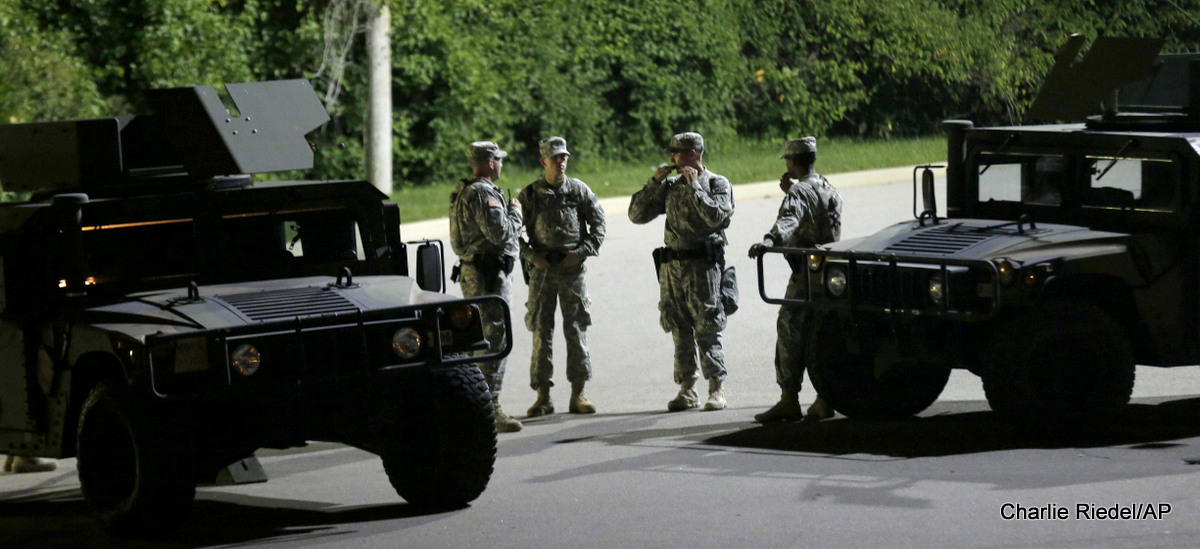
(TheAntiMedia) On Monday, Missouri governor Jay Nixon declared a state of emergency. He activated the Missouri National Guard in anticipation of “unrest” following the Darren Wilson decision. A summons for these services usually indicates a growing tide of opinion against the government. It is almost always accompanied by inordinate numbers of police.
To be clear, the National Guard is often called in when violence erupts, but while it may be effective at stopping that superficial violence (by threatening or using violence), it reliably provides an excuse for the government to ignore the original reasons for that “unrest.”
Here are 5 modern instances of National Guard intervention in domestic affairs and what these historical examples mean for Ferguson:
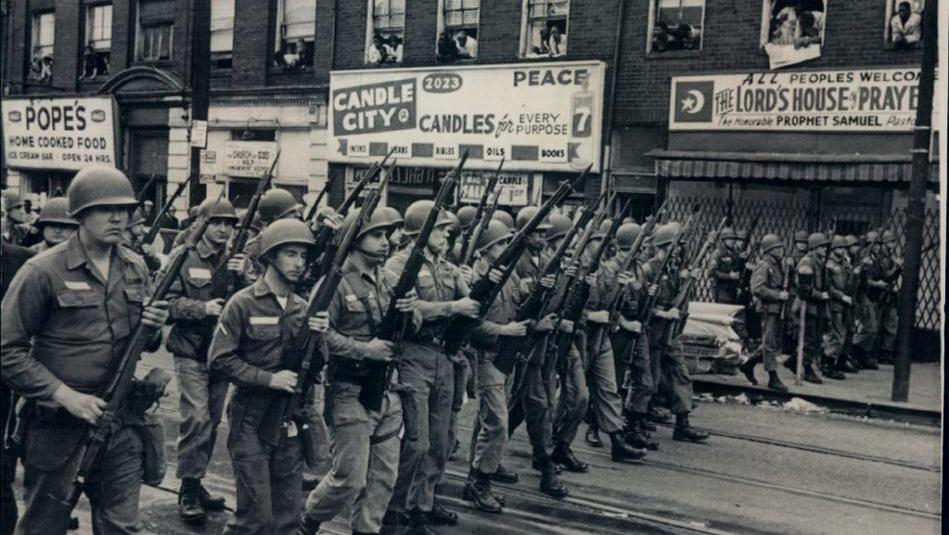
1. The Race Riots: During the 1960s, waves of protest swept the United States for a variety of reasons. The most prominent riots erupted largely due to African-American frustrations with institutionalized racism, from economic inequality to police injustice. The riots were almost always inspired by relations with police, if not sparked directly by incidents of police abuse. In urban centers across the country, governments relied on armies of cops and the activation of thousands of National Guardsmen to shut down waves of often violent protest and looting.
Further, following the assassination of Dr. Martin Luther King in 1968 (which the FBI may have assisted), African-Americans were outraged and rioted again. This prompted activation of multiple state National Guards and amounted to thousands of troops per city, including Baltimore, Chicago, and Washington, D.C.
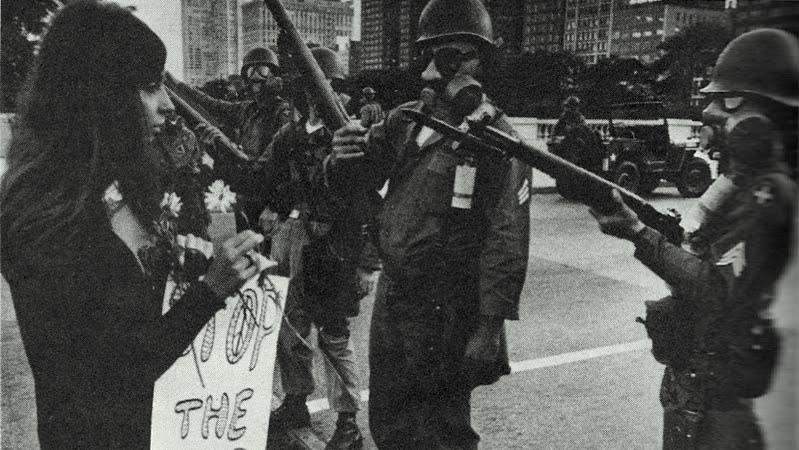
2. The Anti-War Movement: In 1968, the trend of dissent against the state continued. This time, it was against the Vietnam War. The National Guard was activated in Chicago, Illinois to shut down protests at the Democratic National Convention, where scorned President Lyndon B. Johnson, had chosen not to seek re-election. Protesters (and eventually, rioters), were discontent with the corruption and warmongering of the leftist faction of the two-party system and thousands took to the streets. In addition to thousands of police officers who instigated violence, the National Guard helped to put down the dissent and break up the protests.
When that proved, unsurprisingly, to be a short-term solution, protests continued. Three years later at Kent State University, Ohio governor James Rhodes found it appropriate to summon nearly 1,000 National Guardsmen at yet another protest against the ongoing Vietnam War. In the now notorious stand-off, four university students were murdered by the National Guard (who were called to “keep the peace in a protest for…peace). Eight more were wounded. The Guard claimed they were returning fire, but no evidence supported that claim.
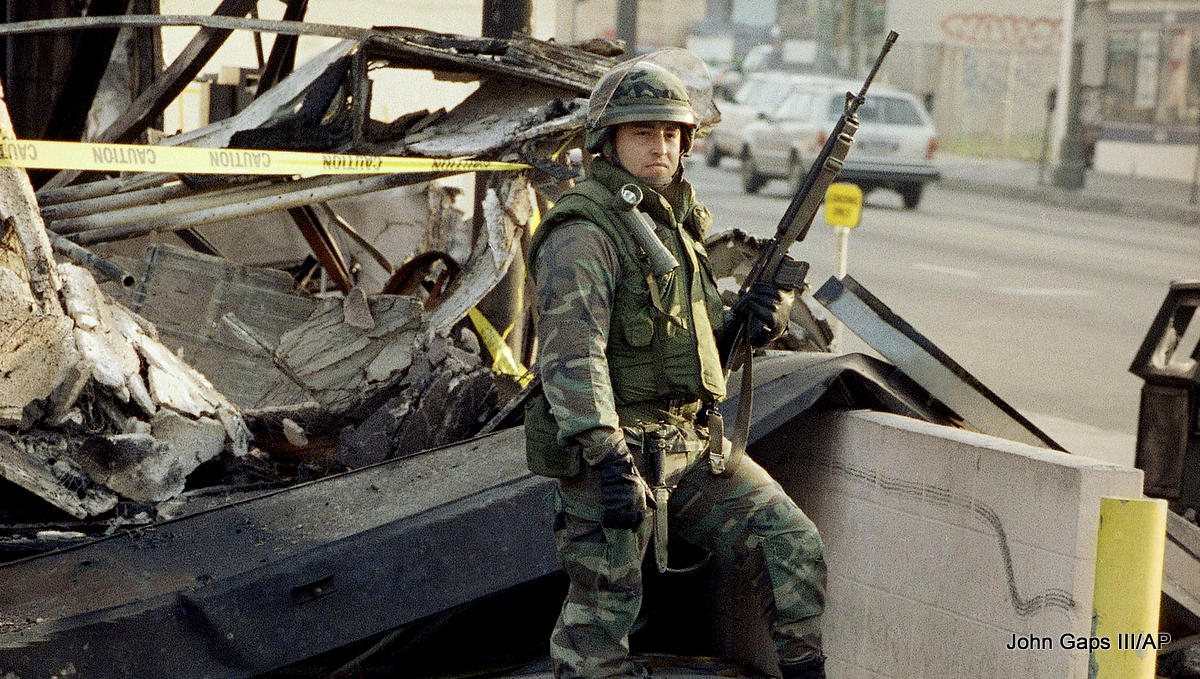
3. The Rodney King Riots: In April of 1992, police officers were acquitted of the brutal 1991 beating of intoxicated black motorist Rodney King in northern Los Angeles. The verdict defied video evidence and riots broke out across Los Angeles. Nearly 10,000 National Guard troops were called upon to stop the riots and looting. This proved that the government’s tactic of sending in troops to stop violent protests (precipitated by violence and racism by the government) as it had in the 1960s had failed. It also proved that the state refused to learn its lesson.
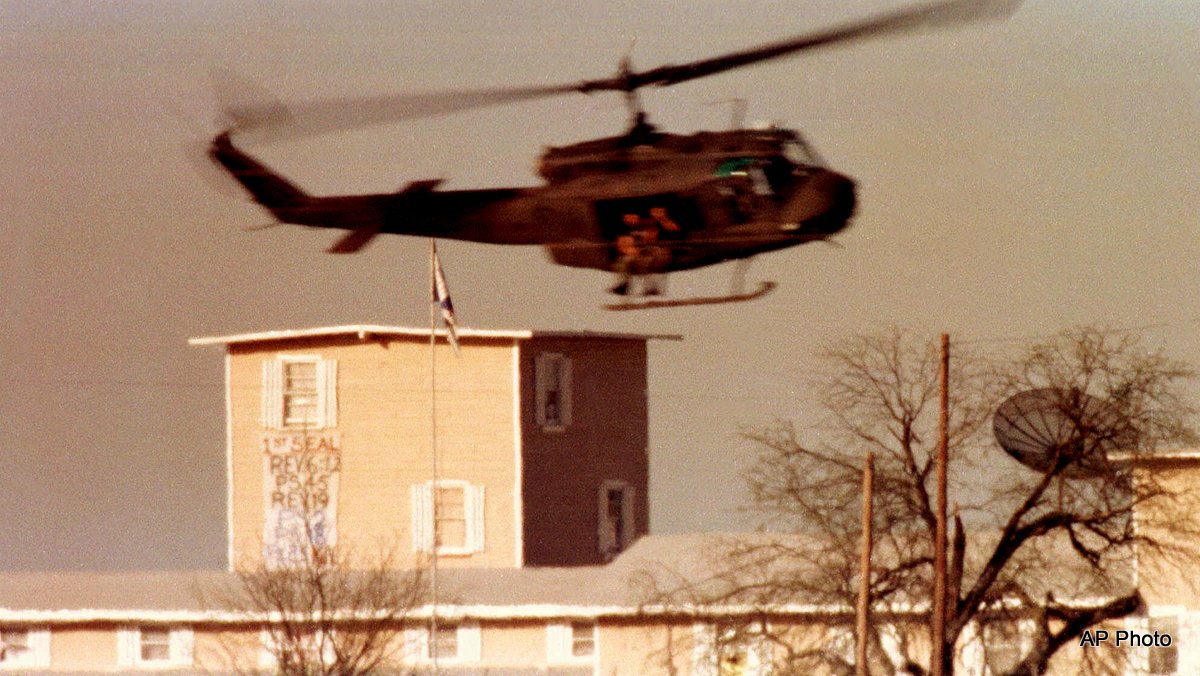
4. Waco, TX and the Branch Davidians: When the Alcohol, Tobacco and Firearms division learned that David Koresh, leader of the religious sect, Branch Davidian, was allegedly harboring illegal weapons, they attempted to raid his facility in Waco, TX. This led to deaths on both sides and the FBI’s involvement. After 51 days, the larger, infamous raid ensued. Though small in number, the National Guard was called to back up the federal government. Shortly after, Koresh’s compound was set on fire and 80 people died, including women and children.
Though the government’s official story is that the Davidians themselves started the blaze, controversy and distrust of this narrative still runs rampant. Koresh and his followers may have been insane and engaged in illicit activity, but the conduct of the FBI and outcome of the 1993 raid is still angrily disputed. The massive show of force is not.
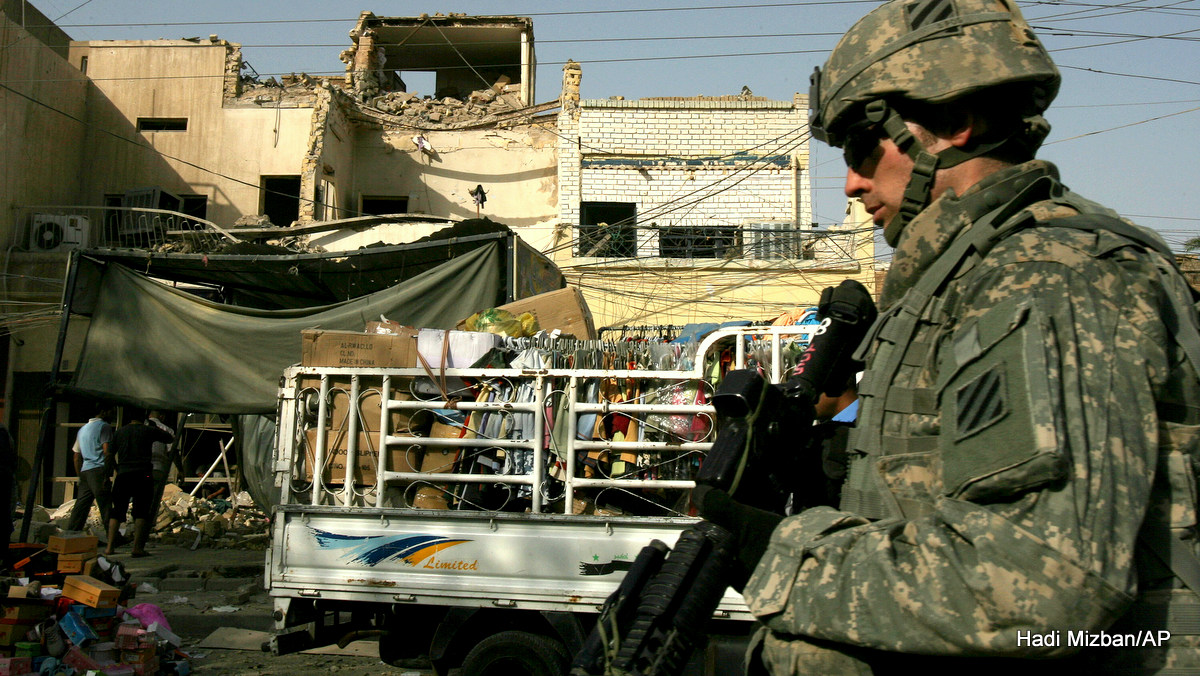
5. The Afghanistan and Iraq Wars: Due to the difficulties and complexities of waging illegal, profit-motivated wars in the Middle East, increasing numbers of domestic troops were needed to waste the wares of military-industrial profiteers. In 2011, nearly half of all troops in Bush’s and Obama’s wars were National Guard. The use of the Guard in foreign wars exposes their true nature: though they may sometimes help during storms and were used to protect the desegregation of schools (after being used to block it), it remains that they are factions of the military.
Clearly, governments have a tendency to call in the National Guard when “order” is disturbed.
Even more so, the National Guard is deemed necessary when the people revolt against oppressive treatment from government. Though riots and violence are never preferable, calling in the National Guard to treat symptoms of underlying abuse is like prescribing pills to treat disease without examining diet or lifestyle.
But what does this mean for Ferguson? Obviously, that Jay Nixon is not expecting an indictment of Darren Wilson. Most importantly, it means that those in power are not taking seriously the demands from (mostly) peaceful protesters that justice be served and police brutality be addressed. Further, considering the issues at hand and the militarization of police, having the National Guard in Ferguson almost seems redundant.
Regardless, calling troops in signals that the government has no desire to accommodate the people. Rather, it would prefer to continue perpetuating the problems that led them to summon the Guard in the first place.
Hopefully, the grand jury will prove Nixon, his “state of emergency,” and his National Guard summons wrong.

